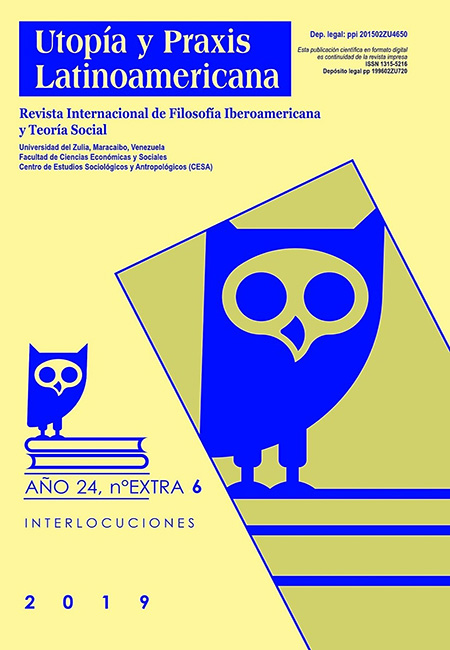Critical thinking and reflective practice in the science education practicum in Kuwait
Resumen
ABSTRACT
This is a speculative paper linking critical thinking to reflective practice in science education teaching practicum for the prospective teachers of science in Kuwait. The writer has identified that student teachers lack in a critical thinking approach to teaching sciences, promoting science literacy, and critically linking science to society and technology, definition of critical thinking has been interpreted in a context of reflective practice, with a redefinition of the factors contributing to unexamined, uncritically absorbed assumptions about teaching and learning. The paper has also shed light on how critical thinking can be evaluated in the teaching practice component.
RESUMEN
Este es un documento especulativo que vincula el pensamiento crítico con la práctica reflexiva en la práctica de la enseñanza de la educación científica para los futuros profesores de ciencias en Kuwait. El escritor ha identificado que los estudiantes docentes carecen de un enfoque de pensamiento crítico para enseñar ciencias, promover la alfabetización científica y vincular críticamente la ciencia con la sociedad y la tecnología. La definición del pensamiento crítico se ha interpretado en un contexto de práctica reflexiva, con una redefinición de los factores, contribuyendo a suposiciones no examinadas, absorbidas sin crítica sobre la enseñanza y el aprendizaje. El documento también ha arrojado luz sobre cómo se puede evaluar el pensamiento crítico en el componente de práctica docente.
Citas
BIBLIOGRAPHY
AMERICAN PHILOSOPHICAL ASSOCIATION (1990). Critical thinking: A statement of expert consensus for purposes of educational assessment and instruction. The Delphi Report: research findings and recommendations prepared for the committee on pre-college philosophy, pp.315-423.
BARTH, RS (1990). Improving schools from within: Teachers, parents, and principals can make the difference. Jossey-Bass Inc., Publishers, 350 Sansome Street, San Francisco, CA 94104-1310.
BEYER, BK (1995). Critical Thinking. Fastback 385. Phi Delta Kappa, 408 N. Union, PO Box 789, Bloomington, IN 47402-0789.
CHANCE, P (1986(. Thinking in the Classroom: A Survey of Programs. Teachers College Press, 1234 Amsterdam Ave., New York, NY 10027.
DEXTER, P, APPLEGATE, M, BACKER, J, CLAYTOR, K, KEFFER, J, NORTON, B, & ROSS, B (1997). “A proposed framework for teaching and evaluating critical thinking in nursing”, in: Journal of Professional Nursing, 13(3), pp.160-167.
ENNIS, R (1992). Critical thinking: What is it? Proceedings of the Forty-Eighth Annual Meeting of the Philosophy of Education Society Denver, Colorado, March 27-30.
FACIONE, PA (1990). APA Delphi Research Report, critical thinking: A statement of expert consensus for purposes of educational assessment and instruction. ERIC Doc. No.: ED, 315, p.423.
FACIONE, PA (1998). Critical thinking: What it is and why it counts. Millbrae. California Academic Press. Haziran, 13, p.2009.
GUNN, TM, GRIGG, LM, & POMAHAC, GA (2008). “Critical thinking in science education: Can bioethical issues and questioning strategies increase scientific understandings”, in: The journal of Educational thought, 42(2), pp.165-183.
HICKEY, M (1990). “Reading and social studies: The critical connection”, in: Social Education, 54(3), pp.175-179.
HUITT, W (1992). “Problem solving and decision making: Consideration of individual differences using the Myers-Briggs Type Indicator”, in: Journal of Psychological type, 24(1), pp.33-44.
LITTLE, JW (1982). “Norms of collegiality and experimentation: Workplace conditions of school success”, in: American educational research journal, 19(3), pp.325-340.
MACKINNON, G (2006). "Contentious issues in science education: Building critical thinking patterns through two-dimensional concept mapping”, in: Journal of Educational Multimedia and Hypermedia, 15(4), pp.433-445.
MARCUS, EC (1988). Developing Critical Thinkers: Challenging Adults to Explore Alternative Ways of Thinking and Acting.
MARSHALL, R, & TUCKER, M (1992). Thinking for a Living: Education and the Wealth of Nations. Basic Books, 10 East 53rd Street, New York, NY 10022-5299.
MAYER, RE, & GOODCHILD, FM (1995). The critical thinker: Thinking and learning strategies for psychology students. Iowa Department for the Blind.
MERTES, L.M (1991). “Thinking and writing”, in: Middle School Journal, 22(5), pp.24-25.
MEYERS, C (1986). Teaching Students to Think Critically. A Guide for Faculty in All Disciplines. Jossey-Bass Higher Education Series. Jossey-Bass Inc., Publishers, 433 California Street, Suite 1000, San Francisco, CA 94104-2091.
OLIVER, H, & UTERMOHLEN, R (1995). An Innovative Teaching Strategy: Using Critical Thinking To Give Students a Guide to the Future.
POWELL, W (2013). Professional development and reflective practice. International schools and international education: Improving teaching, management and quality, pp.96-111.
SCRIVEN, M, & PAUL, R (1992). November. Critical thinking defined. In Handout given at Critical Thinking Conference, Atlanta, GA.
SPRINGER, SP, & DEUTSCH, G (1993). Left Brain. Right Brain. W H.
SWAFFORD, M, & RAFFERTY, E (2016). “Critical Thinking Skills in Family and Consumer Sciences Education”. Journal of Family & Consumer Sciences, 108(4), pp.13-17.
TAMA, MC (1989). Critical thinking: Promoting it in the classroom. ERIC Clearinghouse.
WHISTON, TG (2000). Environmental consciousness and the challenges and barriers to communicating environmental knowledge/indicators. Environmental Behaviour and Quality of Life: Ecological, sociological, psychological and communicational indicators of sustainability, p.91.










